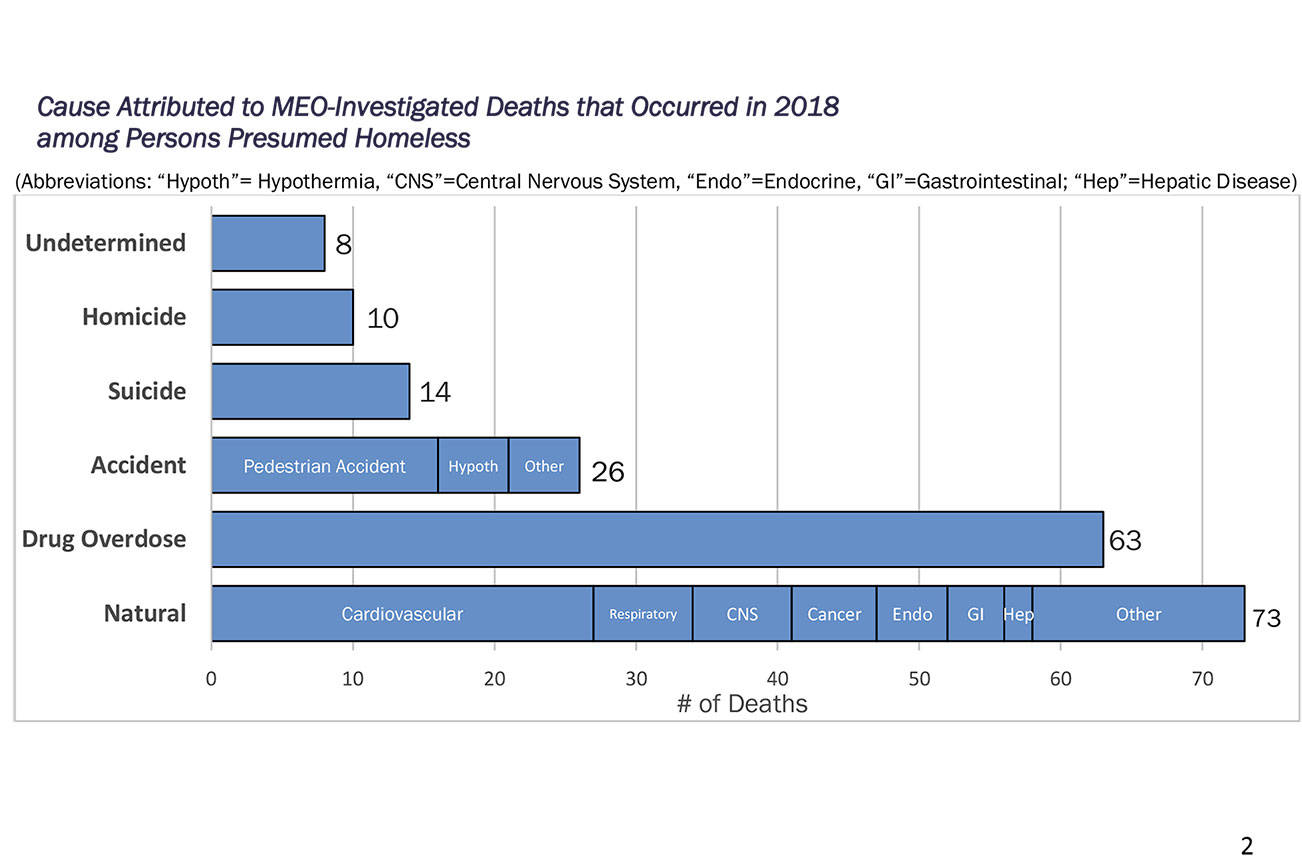The following was written by Keith Seinfeld for Public Health Insider:
Nearly 3,000 deaths are investigated by the King County Medical Examiner’s Office (KCMEO) every year. And for more than a decade, the Medical Examiner has partnered with the Health Care for the Homeless program to research and identify which of those people were presumed to be experiencing homelessness.
Last year, the Medical Examiner investigated the deaths of 194 people who were presumed homeless, a rise from 169 cases in 2017, according to the 2018 Annual Summary.
“We do this work to help the community both pay attention and remember. When people are remembered, they are treated with more dignity,” said John Gilvar, program manager for Health Care for the Homeless, which is part of Public Health—Seattle & King County.
To place this number in context, the Medical Examiner investigates approximately 17 percent of all deaths in King County where the cause was unnatural or not determined by a physician. In other words, 83 percent of deaths in King County are not included in this analysis, so the actual number of people who died while experiencing homelessness was actually higher than 194.
This emphasis on unnatural causes means that premature deaths (such as overdose and violent deaths) are over-represented, and the data in this report can’t be generalized to represent the broader homeless population.
CLOSER LOOK AT REPORT FINDINGS
The people identified in the 2018 Annual Summary died from a wide range of causes, but the largest share died of the same illnesses and diseases that are common among the general population: Heart disease, cancer, respiratory failure.
While 38 percent died of these and other natural causes, another 33 percent died as a result of drug overdose, and 9 percent died in accidents – often as pedestrians struck by a motor vehicle.
Perhaps the most striking number in the report: The median age was 54 years old, which nearly mirrors the national average age of death at 50 for people who are homeless – compared to King County’s overall median age of death at 79 years old.
“We can think of homelessness itself as a health condition, which impacts how long people live,” said Gilvar.
The increase is not due to a spike in any single category or cause of death. There were small increases in nearly all categories.
The KCMEO investigated the cases of 107 people who died outdoors last year (such as in a park, on a sidewalk, or in an encampment), and 75 who died indoors (such as a residence, hospital, shelter or motel). Another 11 died in a car or other motor vehicle.
ADDRESSING FACTORS THAT LEAD TO PREMATURE DEATH
King County and its partner agencies are tackling key root causes of a majority of deaths among people living homeless:
- To prevent drug overdose deaths, a multi-prong approach is not only making the anti-overdose drug Naloxone widely available, but also greatly expanding Medication Assisted Treatment for people with opioid use disorder, including a planned expansion of Public Health’s low-barrier clinic in downtown Seattle, a new program in the King County jail system, and an extension of treatment to people living in encampments.
- To reduce the burden of illness and injury among people currently living homeless, Public Health partners with nine other agencies within the Health Care for the Homeless Network (HCHN) to bring clinical care to where people are: on the streets as well as in shelters, encampments, day centers, etc. HCHN’s two Mobile Medical Vans, for example, bring medical and behavioral health care providers to over 20 locations in the community, including meal programs and encampments on a regular, widely publicized schedule.
- King County, Seattle and other jurisdictions increased the number of emergency shelter beds countywide by 530 in 2018, and more will open in 2019.


